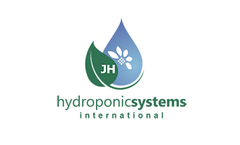Refine by
Field Cultivation Articles & Analysis
11 articles found
Back then, it was still located in Wuustwezel. They started with open field cultivation. Five years later, after moving to Meer, the couple switched to growing plants and trees in pots. ...
In this blog post, we will discuss how to create the best and most efficient scouting reports. One of the first and oldest field data collection methods is scouting. Farmers would physically collect information by observing what is happening to their crops in the fields. ...
One-click creation provides new ideas for efficient and rapid utilization of excellent wild resources and cultivated germplasm, and cultivation of environment-adaptive crops and crops with diverse planting patterns. ...
Farmers discuss yield and cost-benefit; scientists quantify caveats, uncertainty and risk. Moreover, a scientific field trial may produce a wonderful PhD but not be applicable anywhere outside the test site. ...
If we establish a comparison between the amounts of water needed, in liters, to produce a kilo of tomatoes in different cultivation methods that exist nowadays, we can observe how hydroponic crops are the ones that consume less water: Open field cultivation: 60 liters per kilo of tomato. Hydroponic cultivation in greenhouse ...
The results showed that Zai pits, tumbukiza and deep tillage when used together with soil fertility improvement can increase crop yields by 4–10 times in comparison to conventionally cultivated fields. Use of tied-ridging with soil fertility improvement increases crop yields by 100–300%. ...
The objectives of this were: 1) to study the effects of various wastewater treatment levels on crop growth and yields; 2) to determine the pollution loads from wastewater applications to paddy fields, and explore potential health hazards; 3) to investigate the treatment efficiencies of three different levels of treatment systems; and ...
Received for publication April 19, 2009. The fallout radionuclide cesium-137 (137Cs) has been successfully used in soil erosion studies worldwide. However, discrepancies often exist between the erosion rates estimated using various conversion models. As a result, there is often confusion in the use of the various models and in the interpretation of the data. Therefore, the objective of this study ...
Mycorrhizae are presumably important contributors to plant growth in most ecosystems. Our objective in this study was to evaluate the population diversity of arbuscular mycorrhizal (AM) fungi in Clarion (well drained) and Webster (poorly drained) soils of four Iowa soybean [Glycine max (L.) Merr.] fields. These soils normally occur together on the landscape, with Clarion in the upland and Webster ...
Kinetics of organic C and N mineralisation in soil-compost mixtures inform on the short term effects of composts, especially on N availability after compost addition. A longterm field experiment located in Feucherolles (Yvelines, France) has been initiated in 1998 to compare the agronomic value and the environmental impacts of three composts and farm yard manure (FYM): biowaste ...
On account of this aspect the present lecture does not treat with the utilisation of composts in the areas:- Restoration- Secondary raw material fertiliser for field cultivation- Singular application in gardening and landscaping- Growing media for gardening and landscaping but only the use of growing and potting media quality composts in commercial horticulture ...








